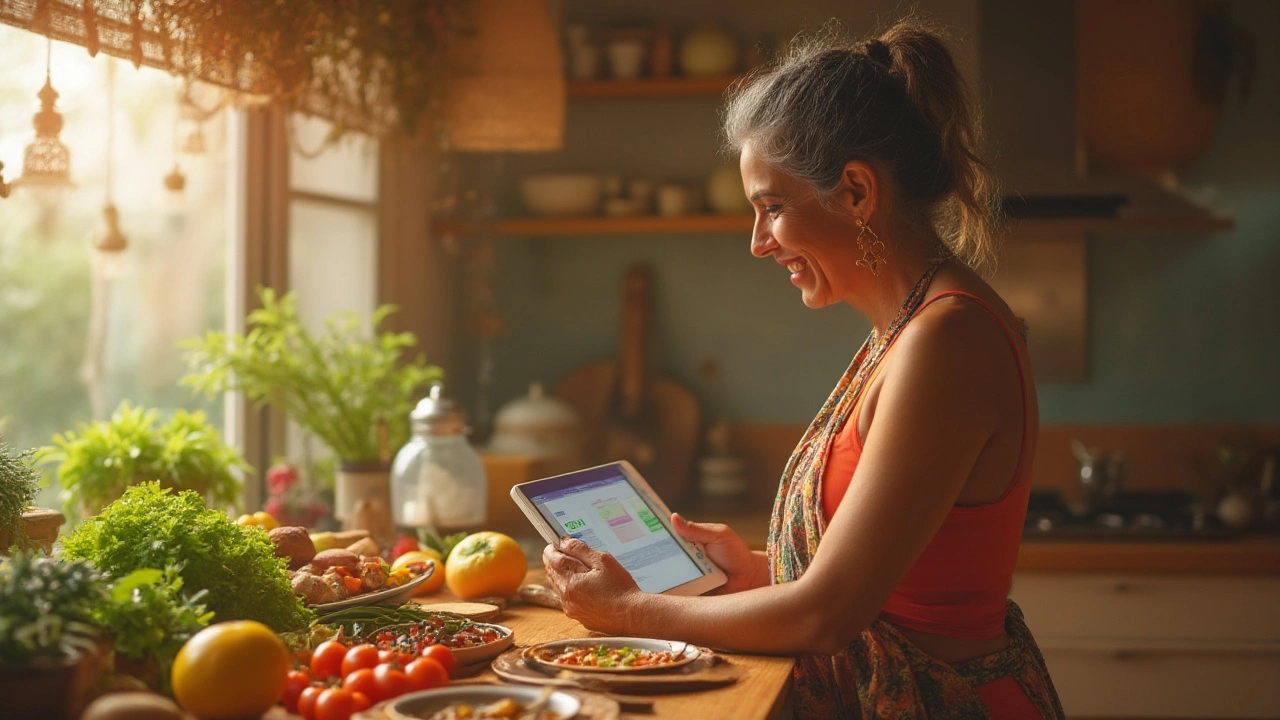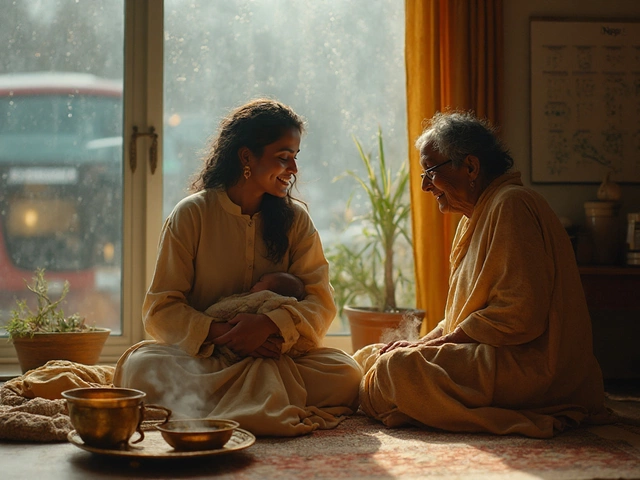
If you’re 55 and wondering how many calories you need to shed those stubborn pounds, you’re not alone. Forget cookie-cutter answers—your calorie needs aren’t some one-size-fits-all number printed on a box. Age changes everything. Hormones, muscle mass, and even sleep play tug-of-war with your metabolism. At 55, the body’s engine doesn’t burn fuel as fast as it did at 25. That’s why your old approach might feel like it’s just not cutting it anymore. You want real numbers, smart strategies, and simple facts—not more myths or recycled advice.
How Many Calories Does a 55 Year Old Woman Need to Lose Weight?
Let’s get right to it. The calorie number for weight loss depends on three big things: your current weight, how active you are, and your overall health. For a 55-year-old woman, the average maintenance range is typically 1,600-2,200 calories per day, according to the U.S. Department of Health and Human Services. If you aim to lose about one pound a week—a safe, steady pace—you usually need to trim about 500 calories a day from your regular intake. That puts most women in the ballpark of 1,200-1,700 calories daily to see the scale move gradually.
But don’t take that range as gospel. Here’s why: If you’re particularly petite or not very active, dropping as low as 1,200 calories might be necessary, but it’s rarely comfortable or sustainable for long. On the flip side, if you walk daily, swim, or garden for hours, you’ll need more fuel. BMI, muscle mass, and medical conditions (like hypothyroidism) also play a role. For best results, consider this table:
| Activity Level | Maintenance Calories | Weight Loss Calories |
|---|---|---|
| Sedentary (Little/no exercise) | 1,600 | 1,100-1,300 |
| Lightly Active (Light daily activity) | 1,800 | 1,300-1,500 |
| Moderately Active (Some daily exercise) | 2,000 | 1,400-1,700 |
| Active (Very active lifestyle) | 2,200 | 1,700-1,900 |
Remember: never dip below 1,200 calories without medical supervision. It’s not just about hunger—hitting too low can mess with your energy, focus, and even cause muscle loss. The sweet spot is eating enough to feel satisfied, fuel your day, and see the numbers gradually shift.
Hormones, Age, and Why Weight Loss After 55 Feels Different
Here’s the not-so-fun secret: after 50, hormones—especially estrogen—start to drop. This messes with how your body stores fat and can slow down your metabolism. You might’ve noticed that losing weight now takes twice the effort compared to your thirties. You’re not imagining it. As muscle mass decreases with age (a process called sarcopenia), your metabolism doesn’t burn through calories like before. This means your body actually needs fewer calories just to “keep the lights on.”
That drop in muscle is a big deal. Muscles burn more calories than fat, even when you’re not moving. So when you lose muscle, your daily calorie burn falls. Add in sleep issues, slower digestion, more stress, and even medication changes—suddenly, the same diet that worked last decade barely budges the scale. According to a 2020 study published in Menopause, postmenopausal women on average burn about 150-200 fewer calories daily compared to younger women.
This doesn’t mean you should eat less and less. In fact, eating too little makes your body hold onto every calorie. The trick is balancing the right calorie deficit with enough protein and resistance exercise to maintain muscle. Lifting weights, using resistance bands, or even bodyweight moves (think: squats, pushups, or simple arm exercises at home) help you keep—not lose—precious muscle while dropping fat. Don’t be afraid to pick up a dumbbell or try a new strength class at the gym. Every bit of muscle helps stoke your metabolism, even when binge-watching your favorite show.

Building a Sustainable Calorie Plan: What to Eat and What to Skip
Knowing your magic number is just step one. The real game-changer? Where those calories come from. At 55, your body needs smarter fuel, not just fewer calories. Starving yourself on crackers and celery isn’t going to hack it. You want meals that fill you up, satisfy cravings, and help protect muscle mass. That means leaning heavily on lean proteins, high-fiber foods, and healthy fats. Think grilled salmon, Greek yogurt, eggs, veggies, beans, lentils, nuts, seeds, and whole grains.
Protein is your best friend here. Research from the American Journal of Clinical Nutrition shows that older women who eat around 100 grams of protein a day lose more weight and body fat than those who stick to traditional “lower-calorie” diets heavy on carbs. Protein keeps you fuller, helps preserve muscle, and can even slightly boost your calorie burn. Add a serving of protein (about the size of your palm) to every meal.
Fiber is your next secret weapon. Foods like broccoli, leafy greens, chia seeds, apples, and berries slow down digestion, keeping hunger and blood sugar in check. Most women over 50 don’t hit the recommended 21 grams of fiber per day—make it your mission to crush that.
And don’t shun fat. Avocado, olive oil, walnuts, and fatty fish keep hormones balanced and boost satiety without packing in junk calories. Watch out for high-calorie, low-nutrition traps. Processed snacks, sugary yogurts, pastries, and white bread are famous for sneaking in extra sugar and empty calories. If you crave sweets, go for fruit or small dark chocolate squares. Hydration is just as critical—aim for at least 8 glasses a day, more if you’re active. Sometimes, that “hungry” feeling is really just thirst in disguise.
- Build meals around protein and fiber first
- Opt for whole foods over processed foods
- Use herbs, spices, and citrus to add flavor without calories
- Meal prep on Sundays or when you have free time, so you’re not tempted by convenient but calorie-heavy takeout
- Mindful eating—don’t eat distracted! Put down your phone, sit down, and enjoy each bite
It’s not just what you eat, but also how you eat. Try keeping a food diary for a week—not to count every crumb, but to notice sneaky patterns. Late night snacks? Grazing during work? You’d be surprised how much a simple log can reveal. Apps help, but a plain notebook works just as well. The trick is honesty, not perfection.
Extra Tips: Speed Up the Journey Without Wrecking Your Metabolism
Sick of “eat less, move more?” There’s more to it. Small tweaks often work better than chasing dramatic calorie cuts. For a 55-year-old woman, every little bit adds up—and the smallest habits often last the longest. Start with these:
- Eat more slowly. It really works. A 2018 experiment in the journal "BMJ Open" found that slower eaters are less likely to gain weight, since they give their body time to register fullness.
- Prioritize sleep. Lack of sleep messes with hunger hormones (ghrelin and leptin), making cravings almost impossible to resist. Shoot for at least 7 hours—block out light, shut off screens, and keep the bedroom cool.
- Fill your plate with vegetables first. Fill half your plate with veggies, then add protein and a healthy fat.
- Find movement you like. Walking counts just as much as the gym. Try 30 minutes daily—walk your dog, garden, dance, or ride a bike with grandkids.
- Limit liquid calories. Soda, juices, fancy lattes, and alcohol can sink a calorie plan fast. Stick to water, herbal teas, or black coffee.
- Don’t fixate on the scale. At this stage, inches lost, how clothes fit, and energy levels matter more than a specific number.
- Try intermittent fasting if you enjoy it (like a 14:10 pattern—eating within a 10-hour window). It works for some, not all. If you hate it, skip it. No magic tricks, just preferences and what fits your life.
- Buddy up. Weight loss is easier (and way funnier) with a friend or group—think text check-ins, neighborhood walks, or sharing recipe ideas.
Finally, check-in with your doctor—especially if you’re taking medications, dealing with thyroid issues, or noticing weird symptoms. Hormonal changes after menopause can hide conditions that make weight loss trickier. If you’re hitting a wall, it’s worth chatting with a dietitian who understands women in their fifties and beyond. And don’t forget—you’re not chasing perfection, just progress. The best thing you can do is get started and build on every small win.
calories for weight loss aren’t a drill—it’s personal science, but also a bit of an art. Aim for the right number, build meals that nourish, and respect what your body needs right now. The journey’s slower, but the rewards? Waking up feeling lighter, moving with energy, and knowing you’re doing what you can for lifelong health. Feels good, right?





Rohan Talvani
I am a manufacturing expert with over 15 years of experience in streamlining production processes and enhancing operational efficiency. My work often takes me into the technical nitty-gritty of production, but I have a keen interest in writing about medicine in India—an intersection of tradition and modern practices that captivates me. I strive to incorporate innovative approaches in everything I do, whether in my professional role or as an author. My passion for writing about health topics stems from a strong belief in knowledge sharing and its potential to bring about positive changes.
view all postsWrite a comment